
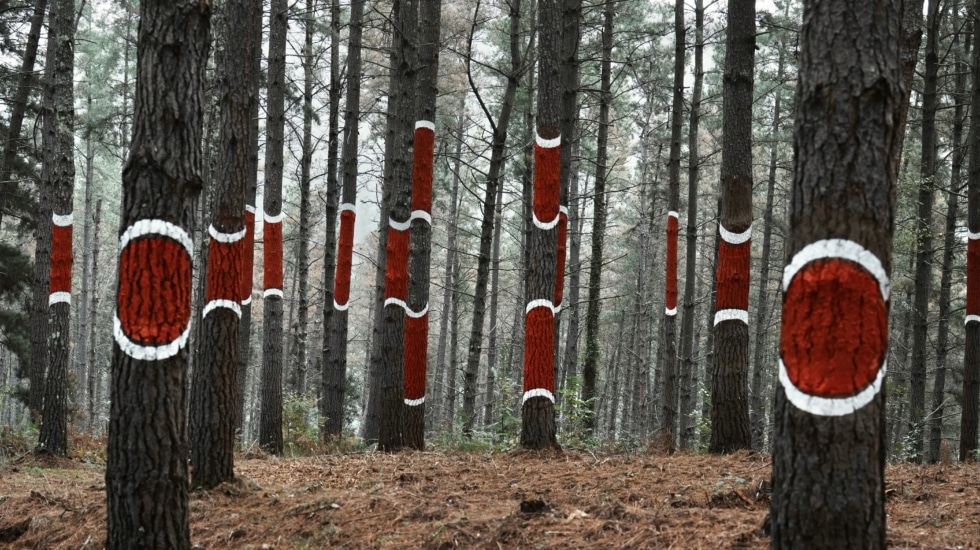
Composition “Forest of Oma” by Agustin Ibarrola.
This is what he imagined in his head. Same compositions, same perspectives. This time misfortune made his task easier. The fungi that threatened to destroy the forest accelerated the search for a solution, and with it one of the most iconic works of Agustín de Ibarrola (Aris, Vizcaya, 1930): “The Forest of Oma” was given life again. It has been 41 years since he began painting these trees near his home in Cortezubí (Bizkaya), in the Oma River valley. Those three-dimensional compositions in which perspective linked the trunks of Monterrey pines and allowed him to not only fill the forest with color, but also create shapes, lines, circles and geometric shapes. Creating Ibarrola in the middle of nature with a brush and a ladder, tree by tree, required three years of work and the cutting down of about 500 pine trees.
Time treated it poorly and institutions forgot about it, but it was the brown streak plague that nearly killed it, damaging 80% of the trees. In 2018, the council of the province of Vizcaya decided to close it to the public and propose its rescue and restoration. The decision wasn’t supposed to be easy. Experts recommended “relocating” this unique and extensive work of art. After exploring the environment near this site, other trees will again become compositions of shapes and colors in the new “Forest of Omagh”. And they would have made it exactly as the Basque author dreamed, with all its shapes and colors.
From this Saturday, the revived Forest of Omagh can be visited by reservation. It reappears more extensive. The previous eight hectares have now turned into twelve, and out of a total of 500 trees, just over 800 remain. On them, students from the University of the Basque Country, who in two stages were responsible for reproducing all the compositions, conscientiously drew, taking care of the perspective, 34 sets that should were to compose all the work. Three lost compositions have now been restored. They disappeared in 1989 due to indiscriminate logging by landowners. These are compositions called “Mosque of Cordoba”, “Tribute to the Oak” and “Nuclear Threat”.
Initially, the street work consisted of 33 art groups, drawings and compositions. Each with its own uniqueness, theme, perspective and play of color. The group Ibarrola painted outdoors, embodying the spirit of the Team 57 movement he promoted in Paris, which advocated making works of art accessible to society in the most direct way possible.
“Migration” 800 trees
One of the key aspects of the entire operation was finding a suitable place to “move” and recreate such a complex work. This required digitizing what already existed and then identifying a location that would allow The Forest of Om to be reproduced as accurately as possible.
The fragile health of Ibarrola, now 92 years old, prevents him from completing the permitted 1.2 kilometer route. Throughout the entire walking journey, the visitor will be able to position himself at the indicated points to see the appropriate angle for each composition. “I love you”, “Homenaje al Greco”, “Caught by Lightning” or “Motorcyclists” are some of the bands that make up the work.
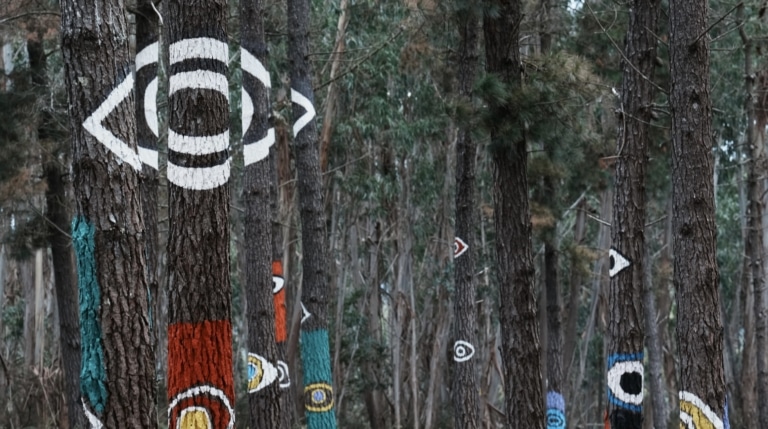
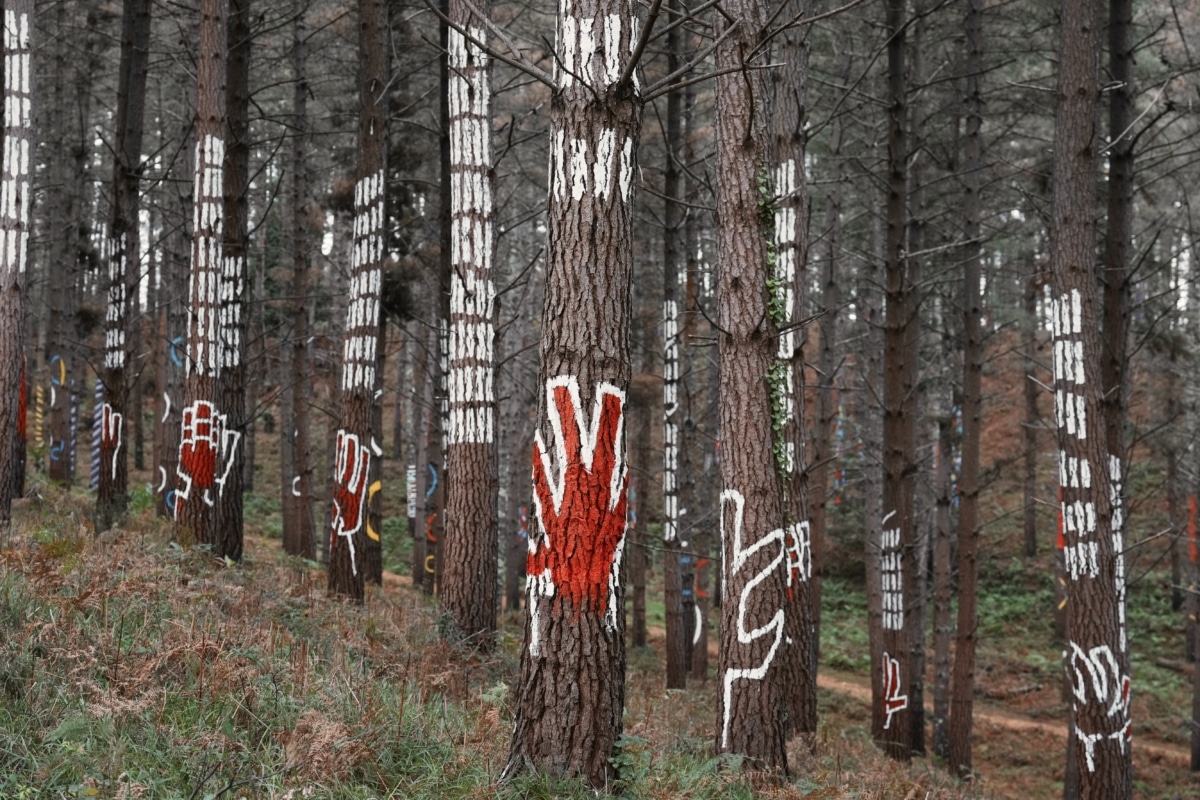
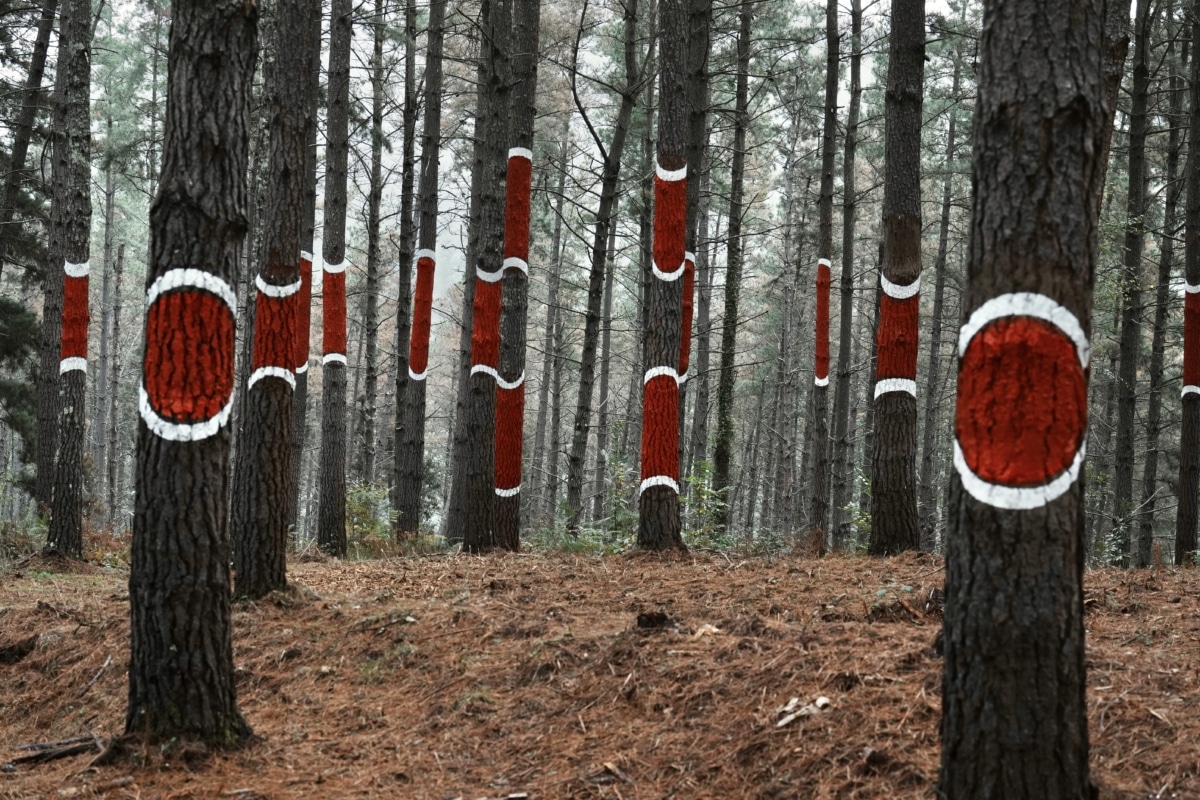
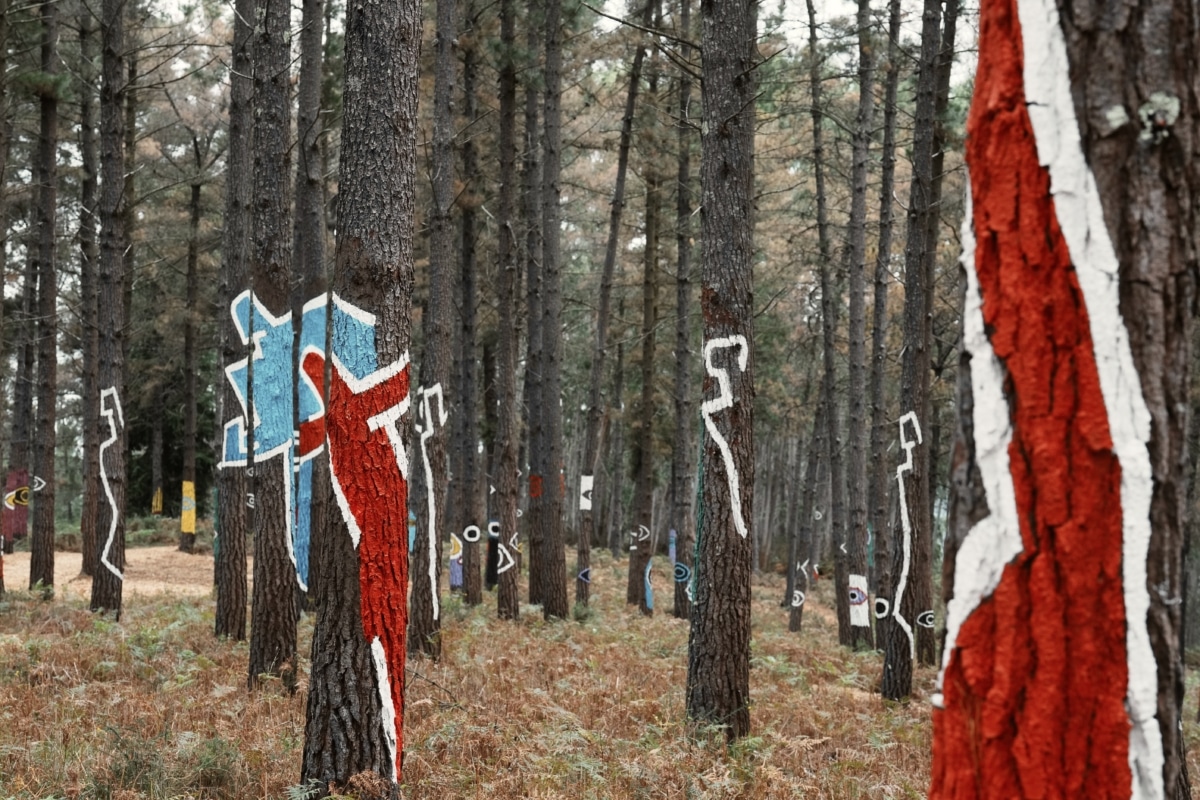
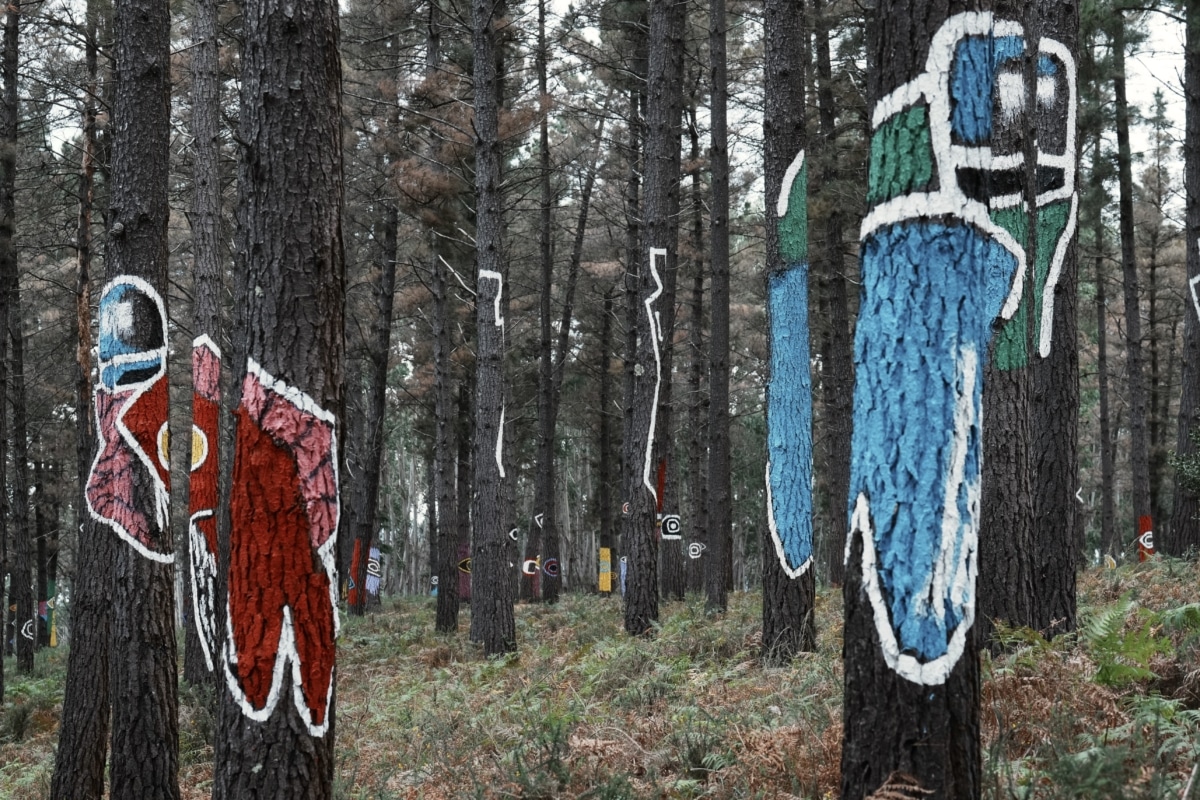
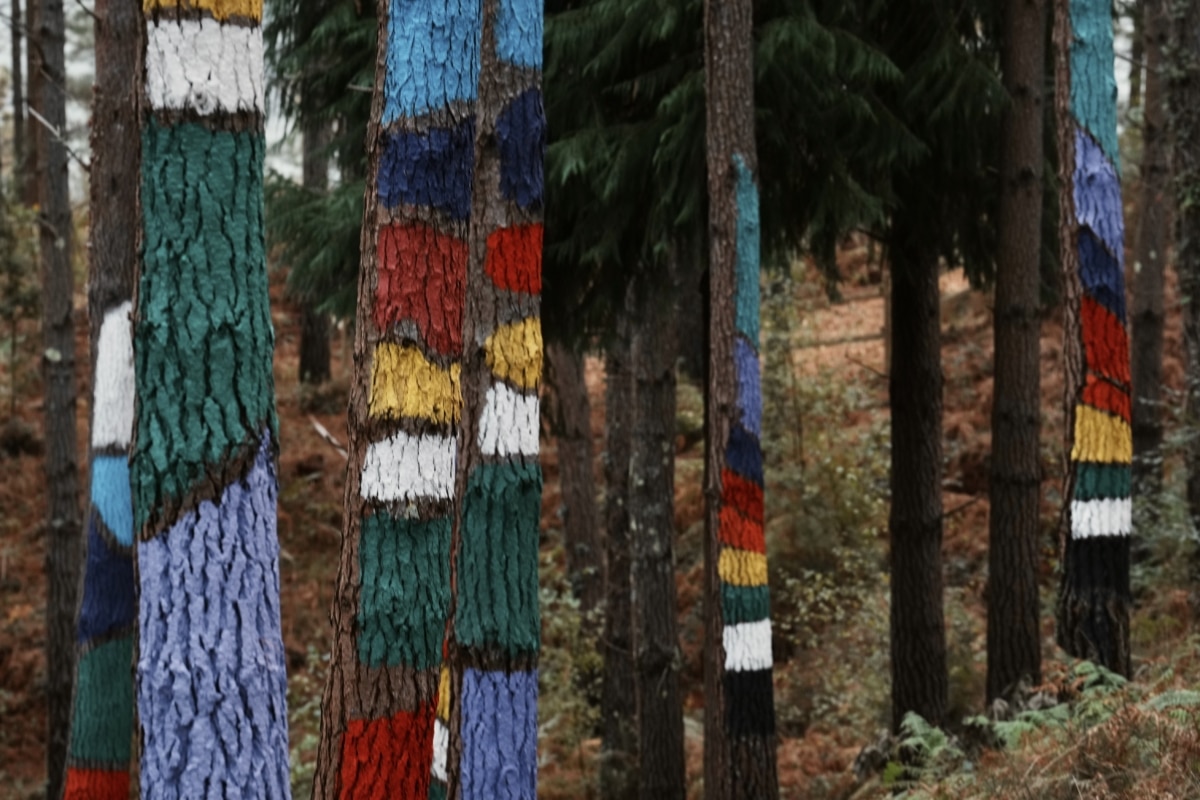
All work was carried out using innocuous paints and using monitoring and control measures to avoid the abandonment and neglect that Omsk Forest led to in the late 90s. Individual monitoring of each tree and safety protocol are planned. was planned to act in case of fire or emergency.
Ibarrola belongs to a generation of great Basque artists, including names such as Eduardo Chillida and Jorge Oteiza. In his case, he always struggled with sculptures, paintings and steps forward in the form of social and political commitments. His belligerence took its toll on him; this is censorship and prison under the Franco regime, this is oblivion during the transition period and this is the instruction during the ETA era. Not long ago, Ibarrola was an artist rejected and rejected by Basque institutions for his militant activity in the civil movements against ETA and association with constitutionalist entities.
Agustín Ibarrola’s artistic abilities began to emerge in the mid-post-war period. Social, political and economic pressure did not take long to arouse curiosity and arouse in him a determination against the dictatorship and support for the humblest and working classes. He never liked Spain’s dictatorship. Ibarrola decided to go to Paris to continue his artistic education and escape the suffocation of the dictatorship. Committed to the communist and workers’ cause, the Basque artist, along with other artists, founded Team 57 in the French capital, an avant-garde movement in favor of abstract rationalist art.
Social and political commitment
In Paris, things did not go as he had dreamed with Ibarrola, and he decided to return. He did this ten years later, in 1961. His rebellion and struggle against Francoism continued. An activity for which he was eventually first arrested and sentenced to nine years in prison by the Military Court. Ibarrola did not collapse. He did not stop drawing even from prison. He even smuggled his works out of prison and managed to exhibit them in some European cities. After four years in prison, Ibarrola was soon arrested again, this time along with his brother, for political activities. He was again imprisoned in Basauri prison in Vizcaya.
The advent of democracy did not improve the climate. Neither artistically nor personally. Critical of the “commercializing” trends in art that began to consume artists and galleries, Ibarrola always defended his uniqueness, away from the prevailing “homologation” and in favor of art as a public service rather than a business. A feature that, together with its political significance, increasingly isolated it from public institutions and organizations.
Between 1982 and 1985 his most popular work, The Painted Forest of Om, was born. Ibarrola’s work received approval only from sectors associated with the constitutionalist left, as did Rosa Diez when she was tourism minister of the Basque Country in 2000 and turned “Bosc Pintado de Homa” into the emblem of her “Pais Vasco Come” campaign. and say it.” For many years this work was the victim of numerous attacks and neglect by Basque institutions.
Fight against ETA
By then, Ibarrola had already begun to confront the threat of ETA terrorism in this still silent Euskadi, which looked away, paralyzed by fear and routine. Ibarrola’s commitment will be reflected in many other ways. He is the author of the famous “Blue Ribbon” with which Basque society first took to the streets to demand the release of businessman Julio Iglesias Zamora in 1997. Other anti-ETA symbols also appeared in his mind and hands in the form of the logos of the Ermua Forum, or Association of Victims of Terrorism (AVT).
From the very beginning, Ibarrola became a regular at the minority gatherings, the Gesto Por la Paz movement, which silently rejected every attack by the terrorist group on the street. Those around him say that it was in one of them that he experienced the most humiliating moment of his life, when, in counter-concentrations organized by left-wing nationalists and located in front of the Gesto por la Paz groups, he was attacked, his unbreakable beret was snatched from him and he was trampled on.
Source: El Independiente